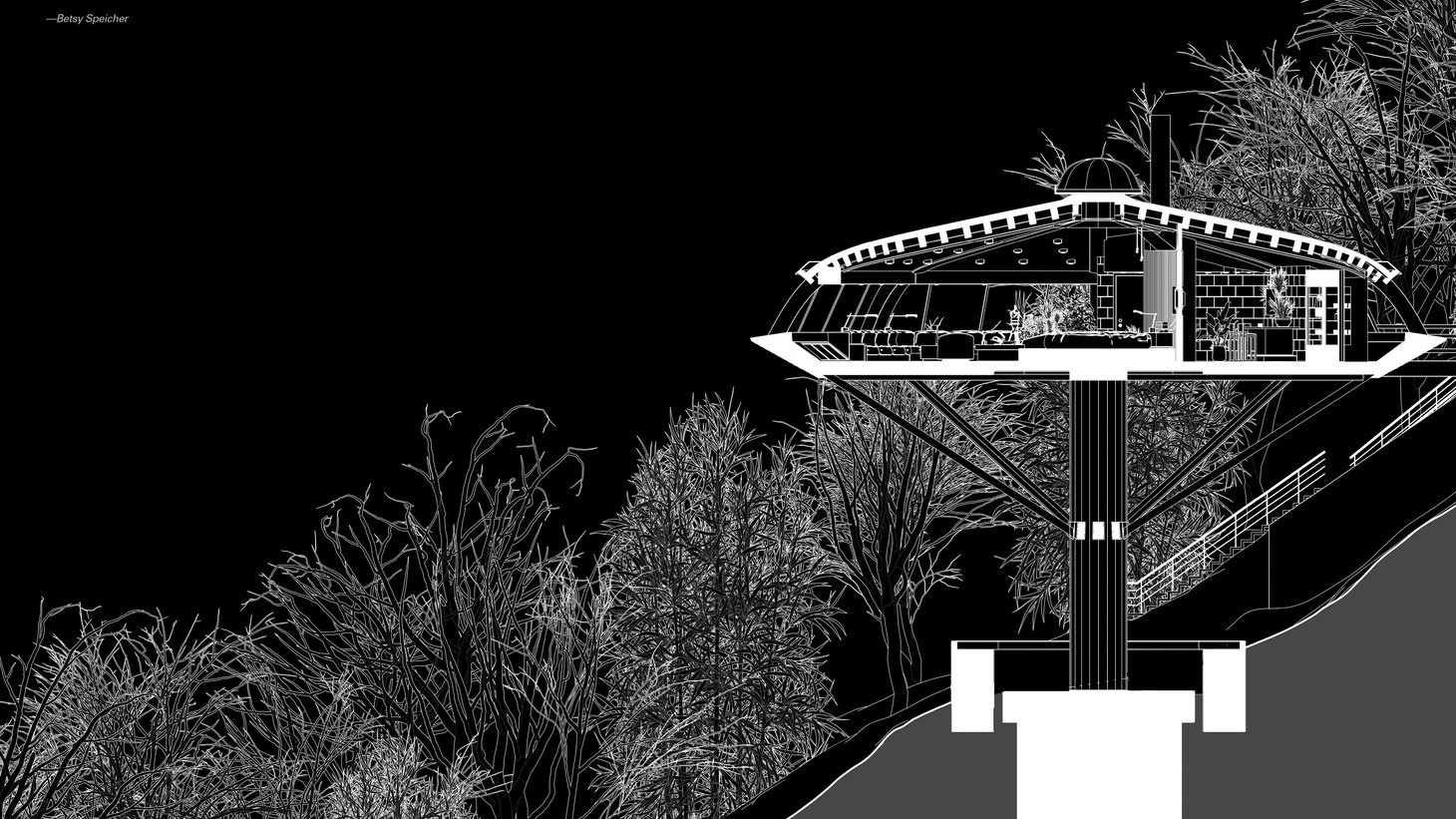INSPIRATION | JOHN LAUTNER
JOHN LAUTNER, FAIA 1911-1994
The American architect John Lautner (1911-1994) was well ahead of his time. His original, unconventional, and very versatile oeuvre was never repetitive. His concern for the dreams and desires of his clients, his sensitivity to the location of his buildings, and his interest in the latest technical developments in were constants in his work.
Lautner blurred the boundaries between indoor and outdoor spaces, between nature and architecture.b Lautner’s oeuvre spans more than half a century, from his first independent commission in 1939 until his death in 1994. In this time period he carried out 144 of his designs, 103 of which are still standing. Most of them are located in and around Los Angeles.
Excerpt from the new monograph: Lautner A-Z: An Exploration of the Complete Built Work by Jan-Richard Kikkert & Tycho Saariste with an introduction by Alan Hess
THE CHEMOSPHERE
Designed for a sloped site in Los Angleles by Jon Lautner in 1960, The Chemosphere was once called "the most modern home built in the world
The building stands on the San Fernanda Valley side of the Hollywood Hills, just off Mulholland Drive. It is a 2,200 sf single-story octagon perched atop a 5-foot-wide concrete pole nearly 30 feet off the ground. This innovative design was Lautner's solution to a site that, with a slope of 45 degrees, was thought to be practically unbuildable, however it still stands today having survived earthquakes and heavy rains. The original interiors were by John H. Smith, the first African American admitted to the National Society of Interior Designers.
HISTORY
The lot had been given to a young aerospace engineer by his father-in-law; despite his own limited means, the engineer, Leonard Malin, was determined to live there. The cost to build Chemosphere, US$140,000 (equivalent to $1.21 million in 2019), was subsidized partly by barter with two sponsoring companies, the Southern California Gas Company and the Chem Seal Corporation. Chem Seal provided the experimental coatings to put the house together and inspired the name Chemosphere. In the end, Malin paid $80,000 in cash and raised 4 daughters in the home.
Photo Julius Shulman
IN FILM AND MEDIA
The building was first used in a dramatic film as a futuristic residence in The Duplicate Man, was featured in a 1964 episode of The Outer Limits, the 1984 film-noir classic Body Double, and directly inspired a home in the 2000 Charlies Angels movie and appears in the end credits of the 2015 Disney fantasy film, Tomorrowland.
Photo Julius Shulman
Initial Sketch, 1959
The Chemosphere: During Construction
Photo: Julius Shulman











